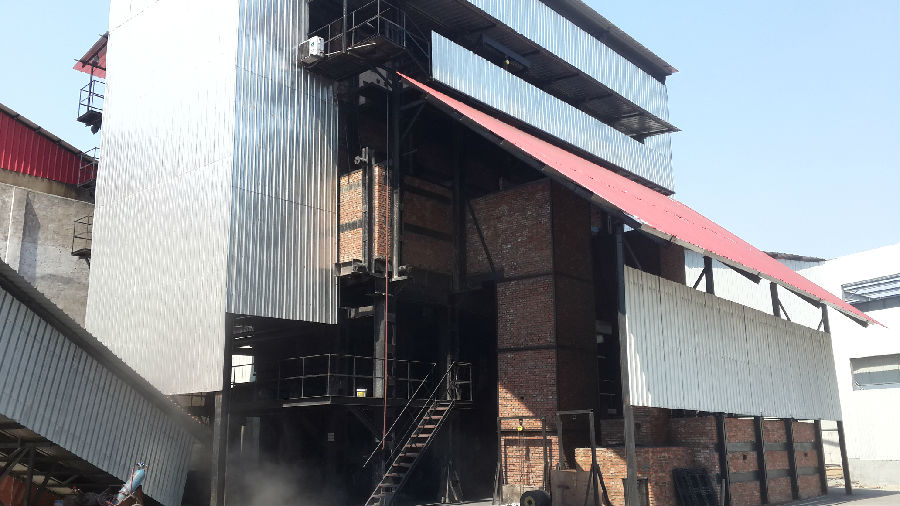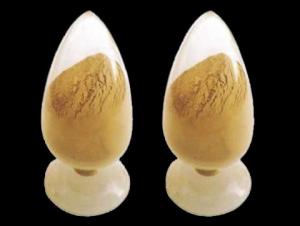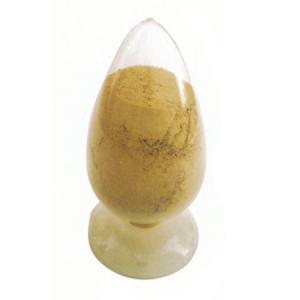China Factory Supply Lowest Price Adsorbent Particles Coaly Activated Carbon
- Loading Port:
- China main port
- Payment Terms:
- TT or LC
- Min Order Qty:
- 20 m.t
- Supply Capability:
- 1000 m.t/month
OKorder Service Pledge
OKorder Financial Service
You Might Also Like
Where to use:
Activated Carbon Desiccant Bags Natural Safe absorbs moisture from the air inside a vault or storage area preventing condensation, mildew, and rust from damaging valuable firearms. The reusable absorption crystals change color once fully saturated and can be easily recharged in the oven. Breathable bag provides protection for up to 33 cubic feet
Features:
Absorbs humidity and condensation in your vault
Reusable crystals recharge in the oven
Crystals change color once fully saturated
Breathable bag can provides 360º of protection


Our Service:
1. Your inquiry related to our products or prices will be replied in 24hours.
2. Manufacturer with large capacity, ensure the fast production cycle after confirmed the order.
3. Our professional technicians will answer your entire enquiry in patient.
4. To meet the refractory solutions, we can serve as your instructions.
5. Protection of sales area and private information for our entire customer.
If you’ve kind enquiries, please don’t hesitate to let us know. ^_^
- Q:What are the different techniques for installing monolithic refractories?
- Installing monolithic refractories can be accomplished using various techniques, each with its own advantages and suitability for different applications. Some commonly employed methods are as follows: 1. Casting: This involves creating a slurry by mixing the refractory material with water or a binder. The resulting mixture is then poured into molds or directly onto the prepared surface. Once set and hardened, it forms a solid monolithic structure. 2. Gunning: By utilizing a gunning machine, the refractory material is sprayed onto the surface. The material is combined with water or a binder to form a wet mix, which is then propelled onto the surface at high velocity. Gunning is commonly used for on-site repairs or lining larger areas. 3. Ramming: In this technique, the refractory material is compacted into place using a pneumatic or manual ramming tool. Prior to ramming, the material is typically preheated to decrease moisture content and enhance workability. Ramming is often employed for lining smaller areas or filling gaps between bricks or precast shapes. 4. Shotcreting: Similar to gunning, shotcreting involves using a dry mix of refractory material. The dry mix is combined with water or a binder just before being sprayed onto the surface using a high-pressure nozzle. Shotcreting is frequently used for lining larger areas or creating intricate shapes. 5. Troweling: This technique entails applying the refractory material onto the surface using a trowel or similar tool. The material used is typically a wet mix that is spread and smoothed manually. Troweling is commonly employed for patching or repairing small areas, as well as for adding finishing touches. 6. Vibrating: By using a vibrating tool or vibrator, the refractory material is compacted and any air pockets are eliminated. Vibrating is often used to improve the density and strength of the monolithic refractory after it has been installed using other techniques. It is essential to consider various factors, such as the type of refractory material, the size and shape of the area to be lined, and the specific requirements of the application when selecting the appropriate technique. Additionally, proper surface preparation and adherence to installation guidelines are crucial to ensure the effectiveness and longevity of the monolithic refractory.
- Q:What are the key considerations when selecting monolithic refractories for tundish applications?
- When selecting monolithic refractories for tundish applications, the key considerations include thermal stability, erosion and corrosion resistance, thermal shock resistance, ease of installation and maintenance, and cost-effectiveness.
- Q:How do monolithic refractories contribute to energy efficiency in iron and steel production?
- Enhancing energy efficiency in iron and steel production processes is a crucial role played by monolithic refractories. These refractories, which are unshaped materials, are utilized to line the components of furnaces, kilns, and other high-temperature equipment involved in the production of iron and steel. One method by which monolithic refractories contribute to energy efficiency is through their excellent insulation properties. These materials possess low thermal conductivity, effectively reducing heat transfer from the furnace or kiln to the surrounding environment. By minimizing heat loss, monolithic refractories aid in maintaining high temperatures within the production units, ultimately reducing the energy required to sustain the desired operating conditions. Moreover, monolithic refractories offer exceptional resistance to thermal shock and wear, ensuring the longevity of the lining materials. This durability diminishes the need for frequent repairs and replacements, resulting in less downtime and increased operational efficiency. Consequently, energy is conserved as the production units can continuously operate at optimal temperatures without interruptions. Additionally, monolithic refractories exhibit excellent resistance to chemical reactions, corrosion, and erosion caused by molten metals and slag. This resistance decreases the formation of cracks and defects in the lining, which can compromise the insulation and increase heat loss. By maintaining a robust and intact lining, monolithic refractories contribute to energy efficiency by minimizing heat escape and ensuring the efficient utilization of energy for the iron and steel production processes. Furthermore, the utilization of monolithic refractories allows for design flexibility in the construction of furnaces and kilns. Their ability to be shaped and applied in various configurations enables the creation of optimized lining structures that enhance heat transfer and combustion efficiency. This flexibility empowers engineers and operators to design and modify the production units to maximize energy efficiency and minimize energy wastage. In conclusion, monolithic refractories significantly contribute to energy efficiency in iron and steel production through their excellent insulation, durability, resistance to thermal and chemical degradation, and design flexibility. By reducing heat loss, minimizing repairs and replacements, and optimizing heat transfer, these refractories play a vital role in conserving energy and improving the overall sustainability of the iron and steel industry.
- Q:How do monolithic refractories withstand chemical attack from molten metals and slag?
- Monolithic refractories withstand chemical attack from molten metals and slag due to their unique composition and properties. These refractories are made of a single, homogeneous material, which provides them with better resistance against chemical corrosion. Additionally, monolithic refractories are designed to have low porosity and high density, which limits the penetration of molten metals and slag into their structure. These materials also have high melting points, enabling them to withstand the extreme temperatures present in industrial processes. Overall, the combination of their composition, low porosity, high density, and high melting points makes monolithic refractories highly resistant to chemical attack from molten metals and slag.
- Q:What are the common applications of monolithic refractories in blast furnaces?
- Monolithic refractories, also referred to as unshaped refractories, find extensive use in blast furnaces due to their advantageous properties and versatile applications. Blast furnaces benefit from the following common applications of monolithic refractories: 1. Furnace lining: The walls, hearth, and roof of blast furnaces are lined with monolithic refractories. These refractories possess high thermal resistance and excellent insulating properties, safeguarding the furnace structure against extreme temperatures and thermal shocks. 2. Repair of tuyeres and tapholes: Tuyeres are nozzles that introduce air or fuel into the furnace, while tapholes are openings used for tapping molten iron or slag. Monolithic refractories are employed to repair and maintain these crucial components, as they can endure the high temperatures and chemical reactions taking place in these regions. 3. Hot repair and maintenance: The demanding operating conditions of blast furnaces necessitate frequent repairs and maintenance. Monolithic refractories are utilized for hot repair and maintenance purposes, as they can be easily applied in a plastic or semi-plastic state to fill cracks, mend damaged areas, or replace worn-out linings. 4. Resistance to erosion and corrosion: Blast furnace environments are highly corrosive due to the presence of molten iron, slag, and other molten materials. Monolithic refractories with exceptional erosion and corrosion resistance protect the furnace lining against chemical attacks, extending its lifespan. 5. Gunning mixes: Gunning mixes are extensively employed in blast furnaces for their ability to be sprayed or gunned onto the refractory lining. These mixes comprise fine refractory aggregates, bonding agents, and additives. They are applied to repair worn-out areas, seal cracks, and provide a protective layer against erosion and slag penetration. 6. Repair of slag line and iron runners: The slag line and iron runners in blast furnaces are prone to erosion and wear due to the corrosive nature of molten slag and iron. Monolithic refractories are utilized to repair and reconstruct these areas, ensuring smooth and efficient furnace operation. To summarize, monolithic refractories play a vital role in blast furnaces, fulfilling numerous functions such as furnace lining, tuyere and taphole repair, hot repair and maintenance, erosion and corrosion resistance, gunning mixes, and repair of slag line and iron runners. Their ability to withstand high temperatures, chemical attacks, and mechanical stresses renders them indispensable in maintaining the integrity and efficiency of blast furnace operations.
- Q:What are the main causes of monolithic refractory failure in the iron and steel industry?
- There are several main causes of monolithic refractory failure in the iron and steel industry. One of the primary causes is thermal cycling. The extreme temperatures experienced in iron and steel manufacturing processes, such as melting, casting, and heat treating, subject the refractory lining to significant thermal stress. This repeated expansion and contraction of the material can lead to cracking, spalling, or even complete disintegration of the refractory. Another common cause of failure is chemical attack. The iron and steel industry involves the use of various chemicals, including molten metal, slag, and gases, which can react with the refractory lining. This chemical interaction can cause erosion, corrosion, or chemical decomposition of the refractory material, leading to its failure over time. Mechanical stress is also a significant factor in monolithic refractory failure. The heavy machinery and equipment used in iron and steel production can generate vibrations, shocks, and impacts that can weaken or damage the refractory lining. Additionally, improper installation or design can result in mechanical stress concentration points, making the refractory more susceptible to failure. Furthermore, improper maintenance and operational practices can contribute to refractory failure. Inadequate cooling or heating procedures, improper drying and curing of the refractory, and insufficient cleaning and inspection can all impact the longevity and performance of the material. Lack of regular maintenance and timely repairs can exacerbate small issues, leading to more significant failures over time. Lastly, the choice of refractory material and its quality can play a significant role in failure. Selecting an inappropriate refractory for the specific application or using low-quality materials can result in premature failure. It is crucial to consider factors such as temperature range, chemical exposure, and mechanical stress when choosing the refractory lining to ensure its suitability and durability in the iron and steel industry. In summary, the main causes of monolithic refractory failure in the iron and steel industry are thermal cycling, chemical attack, mechanical stress, improper maintenance and operational practices, and the choice and quality of refractory material. Addressing these factors through proper installation, regular maintenance, and careful material selection can help mitigate refractory failures and improve the overall efficiency and productivity of iron and steel production processes.
- Q:How do monolithic refractories withstand high temperatures in iron and steel production?
- Monolithic refractories are specially designed to withstand the high temperatures encountered in iron and steel production. These refractories are made from a single piece or a single material, unlike traditional brick refractories that are made by laying bricks one by one. The ability of monolithic refractories to withstand high temperatures is due to their unique composition and structure. They are made from high-quality raw materials such as alumina, magnesia, silica, and carbon, which have high melting points and excellent heat resistance. The monolithic refractory is typically mixed with a binder, such as clay or cement, to give it shape and strength. This binder helps to hold the refractory particles together and provides the necessary structure to withstand thermal stresses. Additionally, various additives and additives can be included in the mix to further enhance the refractory properties. During iron and steel production, the monolithic refractories are exposed to extreme temperatures, rapid heating, and cooling cycles, as well as chemical reactions with molten metals and slag. However, the unique composition and structure of monolithic refractories enable them to endure these harsh conditions. The high melting point materials used in monolithic refractories prevent them from melting or deforming under the intense heat of iron and steel production. These materials have excellent thermal conductivity, allowing them to effectively transfer heat away from the hot surfaces, thus preventing overheating and damage. Furthermore, the binders and additives in monolithic refractories help to increase their resistance to thermal shock, which occurs when there is a rapid change in temperature. This resistance is crucial in iron and steel production since the refractories are frequently exposed to extreme temperature differentials. Lastly, the monolithic nature of these refractories eliminates the joints and gaps found in traditional brick refractories. The absence of joints minimizes the risk of heat leakage and infiltration of molten metal or slag, ensuring a more efficient and durable lining. In conclusion, monolithic refractories are specifically designed to withstand the high temperatures encountered in iron and steel production. Their composition, structure, and unique properties enable them to endure extreme heat, rapid temperature changes, chemical reactions, and thermal stresses, making them essential components in the manufacturing of iron and steel.
- Q:What are the advancements in monolithic refractory technology for the iron and steel industry?
- There have been several advancements in monolithic refractory technology for the iron and steel industry. One significant advancement is the development of low-cement castables, which have improved high-temperature strength, thermal shock resistance, and erosion resistance compared to conventional castables. Another advancement is the introduction of ultra-low cement castables, which offer even higher strength and improved resistance to spalling and alkali attacks. Additionally, the use of advanced bonding systems and additives has led to the development of self-flowing castables, making installation easier and more efficient. These advancements have greatly improved the performance and longevity of refractory linings in iron and steel industry applications.
- Q:What are the main factors affecting the thermal conductivity of monolithic refractories?
- The thermal conductivity of monolithic refractories is affected by various factors. These include the composition of the refractory material, the density of the material, the porosity of the material, and the presence of any additives or impurities. The composition of the refractory material plays a significant role in determining its thermal conductivity. Different types of refractory materials, such as alumina-based, silica-based, or magnesia-based, exhibit different thermal conductivities due to their distinct chemical compositions. Materials with higher alumina content generally display higher thermal conductivities compared to those with higher silica content. The density of the refractory material also impacts its thermal conductivity. Materials with higher densities generally exhibit higher thermal conductivities because the closely packed particles enable more efficient heat transfer. Conversely, materials with lower densities tend to have lower thermal conductivities as the presence of air pockets or voids hinders heat transfer. Another crucial factor is the porosity of the refractory material. Porosity refers to the presence of small pores or spaces within the material. Higher porosity leads to lower thermal conductivity as the air or gas trapped within the pores acts as an insulator, reducing the material's ability to conduct heat. Therefore, materials with lower porosity tend to have higher thermal conductivities. The presence of additives or impurities in the refractory material also affects its thermal conductivity. Certain additives or impurities, such as carbon or metallic oxides, can either enhance or inhibit heat transfer in the material. For example, the addition of carbon can increase thermal conductivity due to its high thermal conductivity, while the presence of metallic oxides may decrease thermal conductivity due to their lower thermal conductivities. In conclusion, the thermal conductivity of monolithic refractories is influenced by factors such as composition, density, porosity, and the presence of additives or impurities. Understanding and controlling these factors are crucial in designing and selecting refractory materials with optimal thermal conductivity for specific applications.
- Q:How do monolithic refractories resist corrosion and erosion in the iron and steel industry?
- Monolithic refractories resist corrosion and erosion in the iron and steel industry through their unique composition and properties. They are made of a single material structure, which eliminates joints and seams, reducing the likelihood of corrosion. Additionally, these refractories are designed to have high density and low porosity, making them resistant to penetration by corrosive elements. The refractories also have excellent thermal shock resistance and mechanical strength, which helps them withstand the harsh conditions of the iron and steel industry. Overall, the combination of their composition, density, and strength enables monolithic refractories to effectively resist corrosion and erosion in this industry.
1. Manufacturer Overview |
|
|---|---|
| Location | |
| Year Established | |
| Annual Output Value | |
| Main Markets | |
| Company Certifications | |
2. Manufacturer Certificates |
|
|---|---|
| a) Certification Name | |
| Range | |
| Reference | |
| Validity Period | |
3. Manufacturer Capability |
|
|---|---|
| a)Trade Capacity | |
| Nearest Port | |
| Export Percentage | |
| No.of Employees in Trade Department | |
| Language Spoken: | |
| b)Factory Information | |
| Factory Size: | |
| No. of Production Lines | |
| Contract Manufacturing | |
| Product Price Range | |
Send your message to us
China Factory Supply Lowest Price Adsorbent Particles Coaly Activated Carbon
- Loading Port:
- China main port
- Payment Terms:
- TT or LC
- Min Order Qty:
- 20 m.t
- Supply Capability:
- 1000 m.t/month
OKorder Service Pledge
OKorder Financial Service
Similar products
New products
Hot products
Related keywords


























